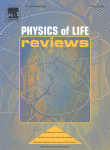CommentEscaping anthropocentrism in the study of non-human culture: Comment on “Blind alleys and fruitful pathways in the comparative study of cultural cognition” by Andrew Whiten
To an extent, anthropocentricism in the study of animal culture may be inevitable. While some look for what makes us different to non-humans, to others, the appeal is the chance of finding ourselves staring back. This has often resulted in battle lines being drawn between these opposing camps: one side determined to prove that humans aren't so special, the other convinced of our own uniqueness. Thus, each side looks to the most obvious weapon to use for their arguments: the great apes. In a way, this makes perfect sense. If a human characteristic is present in animals, it would seem most likely to be present in our closest relatives. Following this logic, if they were to lack it, it is far less likely to appear in any other species. It is of no coincidence that many of the most famous non-human cultural traditions recorded thus far in the wild involve primate tool manufacture and use: these are visually obvious, charismatic behaviours that resemble our own. But there remains a stark difference between us and our closest relatives: human culture is superlatively cumulative in nature. The device you are using to read this article is the result of knowledge accumulated over many generations of scientists and engineers, and no single human could build it on their own from scratch. Debate continues as to the reasons why similarly grand accomplishments are not found in non-human primates or other vertebrates [3], [13], [12], [5], [11] and, of course, the target article [14].
Imagine the surprise if, one day, researchers were to stumble across a species of primates that lived in a large architectural construction that they had built in common - a megalopolis millions of times the size of a single individual. Imagine that around that “city”, certain individuals worked to clear roads of waste and debris, so that others who had been out harvesting resources could more easily carry them back, while still others guarded these foragers and kept dangers away. Imagine that these resources, while inedible to the primates, could be used as a substrate to grow food that they could eat, and that they would grow this food in parts of the city built specifically to maximise the available surface area for farming. We would not hesitate to attribute a form of cumulative culture to this species.
In truth, however, such “civilizations” have been discovered already - among animals so far removed from humans that throughout all these debates, no one ever really thought about them in this context – the social insects. Every one of the above-mentioned behaviours are found in leafcutter ants of the genus Atta [6]. Broadening the view to other species, social insects construct a large variety of elaborate nesting architectures, have societies whose workers specialise in diverse tasks but cooperate smoothly towards the common good, and communicate by means of symbols (such as in the honeybee dance). An unbiased alien researcher visiting our planet might easily rank these insect societies, and not primate societies, as the most advanced “civilizations” besides those of humans [10], [4]. Some Earthlings might be quick to dismiss this view, claiming that behaviour in these humble insects is wholly innate, and that societal complexity thus arose by a wholly different pathway - evolutionary trial-and-error processes rather than cultural ones.
Perhaps much of the extraordinary behaviour of social insects is innate nowadays. But did these behaviours originate without the contribution of individual innovation, social learning and cultural processes, perhaps even cumulative ones? Returning to the agricultural proclivities of leafcutter ants, how this behaviour came to be raises a series of fascinating questions. This is a multi-part, multi-step behaviour involving the coordination of many individuals, each with their own specializations and roles. Did ants clear “roads” before harvesting leaves, or did they harvest leaves and later clear the roads? Did they collect the fungus before trying to farm it? Today, the ants cannot digest leaves, but could they do so before they discovered the more “palatable” fungus alternative? It is clear that the complete fungus-farming lifestyle must have evolved through multiple sequential steps. It may be useful to speculate whether these early beginnings could have arisen through cultural-like processes, with behaviours becoming innate only later on [2], [8].
This is at least cognitively plausible. We now know that insects can socially learn complex, non-natural behaviours: for example, bumblebees can learn to pull strings from skilled conspecifics [1] and to roll balls to specific locations [7]. As to whether such insects might be capable of learning complex, multi-step behaviours socially – or, indeed, any behaviour that they are not capable of acquiring through individual innovation – remains to be determined. But even if they are not, returning to the leafcutter ants, the development of agriculture specifically may have encouraged the further development and elaboration of their behavioural sophistication. “Both human civilization and the evolution of extreme insect superorganisms were attained by agriculture… Human agriculture, which originated about 10,000 years ago, was a major cultural transition that catapulted our species from a hunter-gatherer lifestyle to a technological and increasingly urban existence” [6]. Given the global, cross-cultural spread of the keeping of pets and plants, now often function-less and costly, one might even speculate that elements of such activities are now innate in humans. Perhaps the same might have happened among leafcutter ants, which made the shift to “agriculture” many millions of years before we did [9]. If cumulative non-human culture were to emerge naturally anywhere in invertebrates, it would arguably be in those eusocial insects that form colonies persisting for many years [4]. As Whiten concludes in his review, research pathways involving non-ape, non-primate taxa promise to be highly fruitful. We posit that eusocial insects represent a fascinating system through which cultural evolution in non-humans might be studied.
Declaration of Competing Interest
The authors declare that they have no known competing financial interests or personal relationships that could have appeared to influence the work reported in this paper.
References
- [1]Associative mechanisms allow for social learning and cultural transmission of string pulling in an insectPLoS Biol, 14 (12) (2016), Article e1002589, 10.1371/journal.pbio.1002589
- [2]A new factor in evolutionAm Nat, 30 (354) (1896), pp. 441-451, 10.1086/276408
- [3]Why culture is common, but cultural evolution is rareW.G. Runciman, J.M. Smith, R.I.M. Dunbar (Eds.), Evolution of social behaviour patterns in primates and man, Proceedings of the British academy, vol. 88, Oxford University Press (1996), pp. 77-93
- [4]Social cognition in insectsTrends Cogn Sci (2022), Article S1364661322000857, 10.1016/j.tics.2022.04.001
- [5]Human cumulative culture: a comparative perspectiveBiol Rev, 89 (2) (2014), pp. 284-301, 10.1111/brv.12053
- [6]The leafcutter ants: civilization by instinct(1st ed.), Norton, New York (2011)
- [7]Bumblebees show cognitive flexibility by improving on an observed complex behaviorScience, 355 (6327) (2017), pp. 833-836, 10.1126/science.aag2360
- [8]Epigenetics and the evolution of instinctsScience, 356 (6333) (2017), pp. 26-27, 10.1126/science.aam6142
- [9]Major evolutionary transitions in ant agricultureProc Natl Acad Sci, 105 (14) (2008), pp. 5435-5440, 10.1073/pnas.0711024105
- [10]The view from a distant starBasic Books, New York (1963)
- [11]The zone of latent solutions and its relevance to understanding ape culturesBiol Philos, 35 (5) (2020), p. 55, 10.1007/s10539-020-09769-9
- [12]Ratcheting up the ratchet: on the evolution of cumulative culturePhilos Trans R Soc B, Biol Sci, 364 (1528) (2009), pp. 2405-2415, 10.1098/rstb.2009.0052
- [13]The human adaptation for cultureAnnu Rev Anthropol, 28 (1) (1999), pp. 509-529, 10.1146/annurev.anthro.28.1.509
- [14]Blind alleys and fruitful pathways in the comparative study of cultural cognitionPhys Life Rev, 43 (2022), pp. 211-238, 10.1016/j.plrev.2022.10.003



